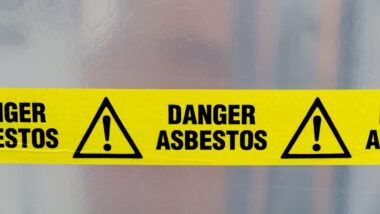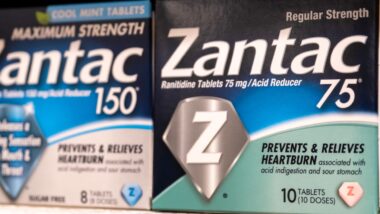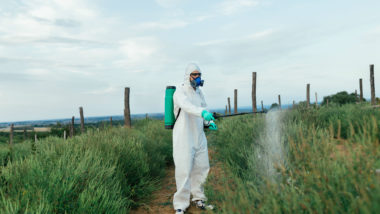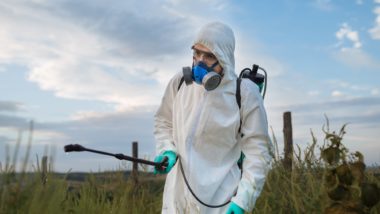Top Class Actions’s website and social media posts use affiliate links. If you make a purchase using such links, we may receive a commission, but it will not result in any additional charges to you. Please review our Affiliate Link Disclosure for more information.
Firefighting foam is used widely across the United States, but there is mounting evidence that this use may come at the cost of firefighter safety. Some firefighters could potentially develop a condition known as AFFF cancer or firefighting foam cancer.
What is firefighting foam?
There are many different tools that a firefighter might use in the course of carrying out his or her job. One of the most common is known as firefighting foam, which serves the purpose of suppressing fires.
Firefighting foam has been used in the industry for over 60 years. Firefighting foam coats the fuel and prevents the fuel’s contact with oxygen, minimizing the combustion and cooling the fire. While firefighting foam has been shown to be effective in fighting fires, it can come with significant risks for the firefighter using it.
Some firefighters could be at risk of developing cancer as a result of deploying firefighting foam in the course of their work. Some of the kinds of cancer associated with exposure to this foam include leukemia, kidney, testicular, lymphoma, and bladder cancer.
Dangerous chemicals referred to as PFAS chemicals are used to make firefighting foam, and these chemicals have been associated with a higher-than-usual risk of cancer for people who are directly exposed to them.
What are PFAS chemicals?
PFAS (per- and poly-fluoroalkyl substances) chemicals were first introduced in the mid-1900s when DuPont came out with their Teflon lined nonstick cookware. These man-made chemicals came into the spotlight in 2001 when Teflon chemicals were found in the drinking water of a West Virginia town.
Tens of thousands of people who lived near the DuPont plant allegedly drank water containing PFAS chemicals.
Subsequent legal action surrounding DuPont’s knowledge of Teflon dangers and contamination brought sparked numerous studies that showed that PFAS chemicals, such as those used to make Teflon, are linked to health problems. EWG notes that potential health risks of PFAS, and PFAS-containing products such as AFFF foam, include the following and more:
- Cancers (testicular, kidney, liver, pancreatic, bladder, breast, leukemia, lymphoma, prostate, and more)
- Reproductive issues
- Weakened immune systems (especially in children)
- Low birth weights
- Endocrine disruption
- Increased cholesterol
- Weight gain
PFAS chemicals have been dubbed “forever” chemicals because they build up in the body and environment permanently without breaking down. This can make their health consequences even more devastating.
Despite the risks associated with PFAS chemicals, these manmade substances are reportedly still used in cookware, food packaging, furniture, clothes, and even personal care products such as cosmetics.
Who is at risk of AFFF foam cancer?
Those firefighters who regularly used this foam on the job could face a higher risk of developing cancer. Since PFAS chemicals are extremely durable, they do not break down inside the body and can remain inside a firefighter’s body for many years, wreaking havoc.
U.S. military firefighters represent the most at-risk class for foam cancer. The foam was widely used throughout the military over the past six decades. Airport firefighters could also develop cancer since the foam was required in airport locations until 2018. However, any firefighter who used AFFF foam during work or training could be at risk for cancer.
Because PFAS chemicals are environmental contaminants, non-firefighter residents may have been exposed to these carcinogens if the foam was used near their home. PFAS chemicals from the foam could contaminate well water sources and other parts of the environment, leading to secondary exposure.
 How has the military responded to AFFF foam hazards?
How has the military responded to AFFF foam hazards?
Agencies like the CDC and the American Cancer Society have shared that PFAS chemicals could lead to cancer. However, the firefighting foam is still in use in some places today because of its effectiveness for suppressing fires.
The cancer-causing foam is currently under investigation in the military and could be banned by 2021, according to some reports.
More recently, the Department of Defense has funneled millions of dollars into finding an alternative for PFAS foams. One DoD-funded professor from the Colorado School of Mines said that the department “encourages us to work across disciplines and outside our own university, even at locations throughout the world, to get the best minds to address this.”
Are you eligible for damages?
If you developed cancer unexpectedly after working as an airport or military firefighter who regularly used this foam for training exercises or in actual fires, you might be able to file a lawsuit to assist with compensation.
As more research comes out about the connection between firefighting foam and cancer, consider reviewing your own medical records.
What compensation is available?
If you’ve developed firefighting foam cancer, compensation received from a settlement or lawsuit could pay for past and future medical expenses in addition to other damages associated with a cancer diagnosis. Enough lawsuits have been filed against manufacturer 3M that an MDL was formed in South Carolina. In early 2020, Tyco Fire Products agreed to a $17.5 million settlement to resolve claims that its firefighter foam contaminated well water in Wisconsin.
Recently, 3M and Daiken agreed to a $12 million water contamination class action settlement to bring an end to claims that the companies were responsible for contaminating residential water sources in Alabama.
How to file a firefighting foam cancer lawsuit
A growing number of people are coming forward with allegations of cancer after exposure to PFAS, alleging in some cases that they were not warned of the risk, that they were not given proper protections, or that the toxic chemicals contaminated their drinking water, placing them at serious risk.
If you have developed cancer after exposure to firefighting foam, you may be able to file a lawsuit and pursue compensation. Of course, filing a lawsuit cannot take away the pain and suffering caused by a cancer diagnosis, nor can it bring a loved one back to life, but it can at least help to alleviate the financial burden incurred by medical expenses, lost wages, and more.
If you believe that you have developed cancer as a result of using this foam, a consultation with an experienced lawyer can help you to determine your next steps, and if you’re eligible to file a lawsuit. Top Class Actions can help you to identify an AFFF foam cancer attorney so that you can have your evidence and case reviewed.
If you or someone you love developed cancer after being exposed to firefighting foam, you may have a legal claim. Fill out the form on this page now to find out if you qualify to participate in a free firefighting foam lawsuit investigation.
ATTORNEY ADVERTISING
Top Class Actions is a Proud Member of the American Bar Association
LEGAL INFORMATION IS NOT LEGAL ADVICE
Top Class Actions Legal Statement
©2008 – 2024 Top Class Actions® LLC
Various Trademarks held by their respective owners
This website is not intended for viewing or usage by European Union citizens.
Get help – it’s free
Join a free firefighting foam cancer class action lawsuit investigation
If you qualify, an attorney will contact you to discuss the details of your potential case at no charge to you.
PLEASE NOTE: If you want to participate in this investigation, it is imperative that you reply to the law firm if they call or email you. Failing to do so may result in you not getting signed up as a client or getting you dropped as a client.
Oops! We could not locate your form.


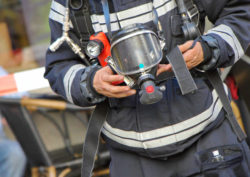 How has the military responded to AFFF foam hazards?
How has the military responded to AFFF foam hazards?